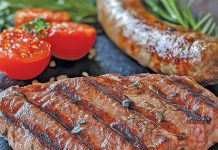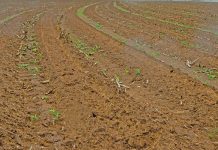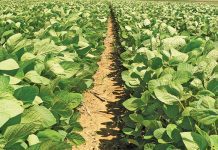
Photo: Bill Kerr
When growing seedlings for my purposes on a large estate, and before cavity seedlings were introduced, I would sow 2 000 seedbeds of cabbage in flooded 5x1m beds. After a few years of doing this, I thought I knew all that was required to produce good seedlings.
Root shedding
As the seedlings were pulled, there was a certain amount of root shedding in the process, and the transplants would lie flat on the ground during the day. They only remained upright after three days when they had produced more roots to fully nourish the plants.
The estate also had a tobacco section, and they would plant their tobacco seedlings in sandy soil in order to be able to regulate their growth and conditions by carefully monitoring the nitrogen applications.
These were raised, sprinkler-irrigated seedbeds. When the farmer had transplanted all his seedlings, he offered to let me use the beds for some of my seedlings. I was not keen but agreed nonetheless so as not to offend him.
As it turned out, I eventually did need the beds; I planted my seedlings
out despite not having great expectations for them. To my amazement, they were still standing the next day and took off straight away.
These seedlings were light in colour and had hard stems and thick, leathery leaves.
Lesson learnt
The lesson I learnt from this exercise was that the slower growth, due to the lack of growth stimulation, caused the plants to store the energy derived from sunlight in their leaves, ready to be used when conditions improved.
This is why they took off so quickly after transplanting. Weeds have also acquired this strategy; when rain eventually arrives after a stressful dry period, they take off at a surprising rate.
We can learn much from nature and incorporate it into our farm management strategies.
Fortunately, with modern cavity seedlings, we don’t get the root damage, but we can still allow the plants to build up energy so they’ll take off quicker at transplanting. We usually get a more uniform stand as an additional benefit.
These seedlings will be lighter in colour due to a reduced level of nitrogen. New growth is slowed down, while the leaves become thickened and leathery and the stems harder. These seedlings are therefore suited to transplanting under adverse conditions, such as in hot weather or sandy soils.
The seedlings need to be different for different seasons. This is especially the case where the seedlings are being produced in winter for sending to a colder area. The same hardening process will suffice for these conditions.
I have often seen farmers experience severe damage when planting insufficiently hardened seedlings from a warm area, only for a cold front to arrive soon after transplanting.
It is in the seedling grower’s interest to give a nitrogen dressing before the plants go to the farmer. The benefit to the farmer will result in them returning to make repeat orders.











